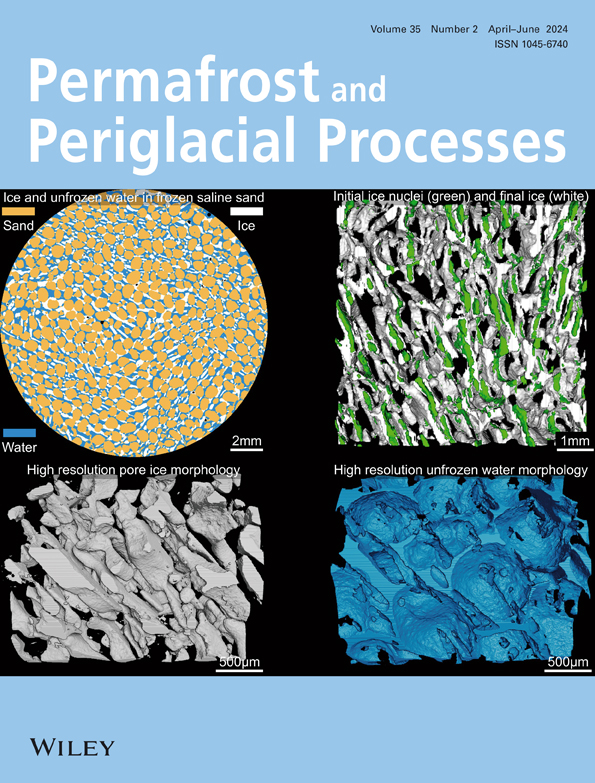升温引起的颗粒冰膜消融作用下冻土-岩石混合体强度退化机理研究
IF 3.3
3区 地球科学
Q2 GEOGRAPHY, PHYSICAL
引用次数: 4
摘要
本文章由计算机程序翻译,如有差异,请以英文原文为准。
Mechanism of strength degradation of frozen soil–rock mixture under temperature rise‐induced particle ice film ablation
The mesoscale effect of climate change and engineering activities on a superficial frozen soil–rock mixture (FSRM) in regions is complex. The decrease in strength caused by particle ice film ablation under temperature rise has various effects, such as upper subgrade settlement deformation. However, the internal mechanism of FSRM strength degradation remains unclear. Triaxial and nuclear magnetic resonance tests on FSRM were performed at various temperatures to clarify the mechanism of FSRM internal degradation. The results show that the strength, cohesion, and internal friction angle of FSRM decrease with increasing temperature, and the attenuation is significant in the range of −5 to 0°C. The change in ice–water content can be divided into three stages (i.e., freezing, phase transformation, and complete melting). In the three stages, the maximum free water is only 24%, while the maximum bound water is 100% above 0°C. Based on the microscopic test results, a mesoscopic calculation model for FSRM particles was developed. It was found that the work between particles is consistent with the law of strength degradation, and the friction function by particles gradually changes to bite work with increasing temperature. By introducing the strain energy theory, the strain energy generated by particle shear work is considered the key index to reflect FSRM strength. The particle ice film locking effect is weakened under temperature rise, and the increase in water weakens the strain energy generated by the work of the bite friction between particles during the shear process. At the macro level, the strength of FSRM deteriorates.
求助全文
通过发布文献求助,成功后即可免费获取论文全文。
去求助
来源期刊
CiteScore
9.70
自引率
8.00%
发文量
43
审稿时长
>12 weeks
期刊介绍:
Permafrost and Periglacial Processes is an international journal dedicated to the rapid publication of scientific and technical papers concerned with earth surface cryogenic processes, landforms and sediments present in a variety of (Sub) Arctic, Antarctic and High Mountain environments. It provides an efficient vehicle of communication amongst those with an interest in the cold, non-glacial geosciences. The focus is on (1) original research based on geomorphological, hydrological, sedimentological, geotechnical and engineering aspects of these areas and (2) original research carried out upon relict features where the objective has been to reconstruct the nature of the processes and/or palaeoenvironments which gave rise to these features, as opposed to purely stratigraphical considerations. The journal also publishes short communications, reviews, discussions and book reviews. The high scientific standard, interdisciplinary character and worldwide representation of PPP are maintained by regional editorial support and a rigorous refereeing system.

 求助内容:
求助内容: 应助结果提醒方式:
应助结果提醒方式:


